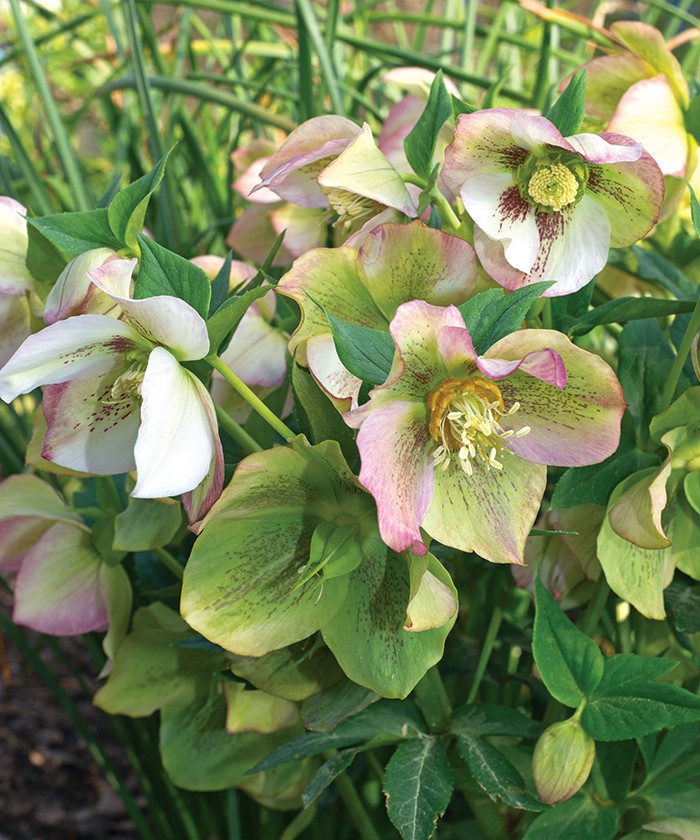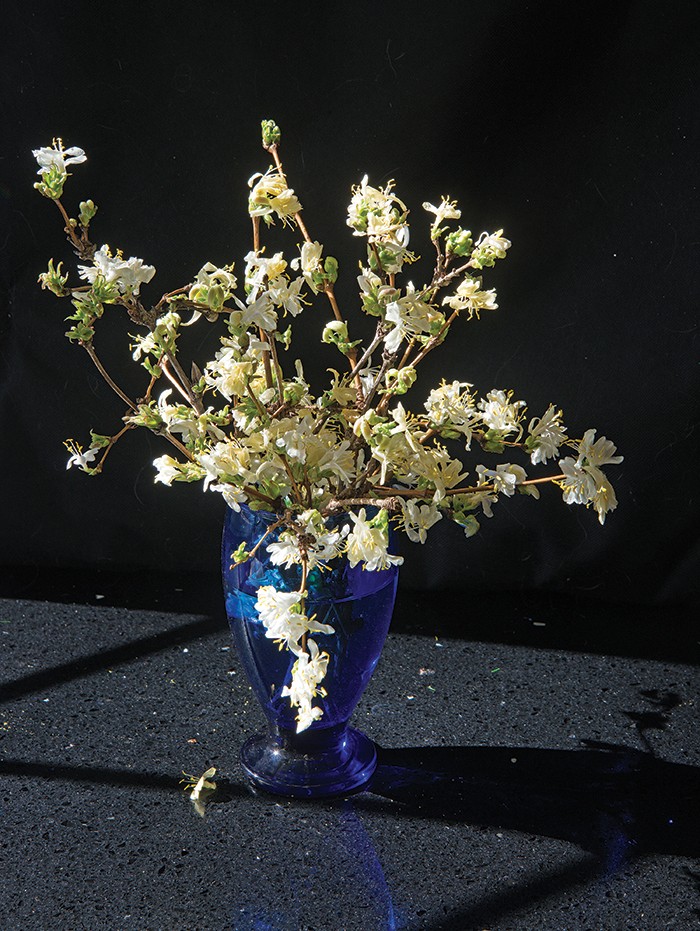My spring begins much sooner than yours does. No, I don’t “snow bird” down to a condo in Tampa, Fla., during the winter, nor do I book an extended Caribbean cruise for February. Instead, I have winter honeysuckle.
Closely related to the often-seen — and usually maligned — Japanese honeysuckle vines that fill the balmy breezes of spring and summer with their sweet, intoxicating fragrance, winter honeysuckle will put on a similar show for the nose, but earlier, when Ol’ Man Winter still has the garden in its icy grip.
Tagged with one of the more poetic botanical names — Lonicera fragrantissima — winter honeysuckle is actually a large bush. Well, a large, fickle bush. Depending on the weather, it could hold onto some of its leaves or go completely bare-branched during the coldest months. Also depending on the severity of the winter, its blooms might begin to open in January or wait until February and then persist into early spring.
Whenever the flowers do pop out, they will tickle the nostrils with scent-sations that represent the spring garden to come. Cascading down the bush, these dainty, white sprites infuse the chilled winter landscape with a delicious, citrus-like smell.
I often cheat my way to an even earlier spring by force blooming a few of my winter honeysuckle’s dormant branches. In early January, I cut four or five 12- to 15-inch limbs, set them in a vase of water (changing it weekly) in a bright inside location out of direct sunlight, and wait for the flowers to open and fill the room with their chase-the-winter-blues-away perfume.
Winter honeysuckle potentially stretches to 10 feet tall and about as wide, but it can be kept shorter with an annual pruning. This deer-resistant shrub grows best in sun to light shade. Planted in average garden soil, after becoming established, it tends to be quite drought-tolerant.
The word “invasive” has occasionally been applied to this fragrant Chinese native, but my winter honeysuckle has been behaving. Probably one of the reasons it has remained restrained is that I prune the shrub right after flowering, which not only subdues the shrub’s size but prevents small red berries — winter honeysuckle wannabes — from forming.
Now is a perfect time to search for winter honeysuckle at nearby nurseries — the flowers are sure giveaways, but your nose will probably find them first. If you want to let your fingers do the shopping, Niche Gardens (nichegardens.com) in Chapel Hill sells it at their shop and online.

Hellebores can perform well even in areas of dry shade, where few other plants thrive.
Like winter honeysuckle, hellebores (Helleborus x hybridus) will soon be easy to spot at local nurseries. These cold-hardy wonders readily produce displays of cute, cupped flowers during the waning of winter and continue blooming into the new spring.
Even after their blossoms have faded, hellebores refuse to go away because they maintain their handsome 12- to 18-inch-high clumps of evergreen foliage through the hottest months.
To Do in the Garden
January
- The foliage of houseplants that have been tucked away on comfy, sunny window sills inside for the winter should not touch the glass. Tender leaves can be damaged by the chilled glass, especially on the coldest nights.
- If you enjoy growing plants from seeds, now is the best time to purchase unique as well as popular selections for your garden-to-be from local garden shops and online catalogs. If you wait until the springtime buying frenzy, expect to become very familiar with the phrase “Out of Stock.”
- Hot orange, blazing red, lightning yellow — these are the bright colors to spray paint the handles of your garden tools now so they won’t be easily lost in the rush of lush greenery to come this spring.
- Overwintering garden friends on the wing will appreciate it if you have the bird feeder well stocked now. Also, keep the bird bath free of ice, and wash the bowl at least once a month.
February
- February 14th is not only the day to share sweets with your Valentine sweetie, but it is also time to give your fescue lawn a good tickle for the spring growing season with an application of one pound of nitrogen per 1000 feet of lawn.
- If any motorized garden equipment still has gas left over from last autumn’s chores, replace it with a fresh refill to help prevent carburetor clog.
- Pansies are champs at blooming in the winter, but if you pick their spent blossoms off now and water the plants monthly with a diluted fertilizer solution, they will carry their fancy flower show well into the spring.
- 2019 Maggy Awards: Services
- 2019 Maggy Awards: Restaurants
- 2019 Maggy Awards: Shopping
- 2019 Maggy Awards: Lifestyle
- Exam Room to Legislative Floor
- Hands On
- The Early Spring of Winter Honeysuckle
- Cary’s SideBar: Classic with a Twist
- Liquid Assets: Acorn Brown Ale from Jordan Lake Brewing Company
- Liquid Assets: Oak City Amaretto
- Picture Perfect!
- Sorghum-Spiked Challah French Toast from Postmaster
- Tobacco Road Marathon
- From the Editor: January 2019






